MY MOST IMPORTANT TOOLS
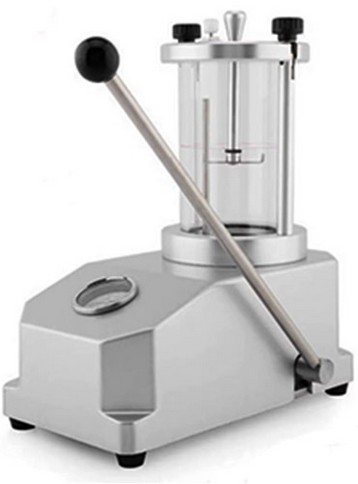 | The device can be used to test the tightness of a watch case. A test up to a maximum of 6 bar is possible. First, the watch case is suspended above the water level and the cylinder is pumped up to the desired test pressure. After a few minutes, when the pressure in the watch case has equalised with the pressure in the cylinder in the event of a leak, the watch case is lowered into the water and the pressure in the cylinder is slowly released. If the pressure in the watch case has actually increased due to a leak, air bubbles must rise from the watch case after the pressure has dropped. This allows me to see whether and, if so, where the leak is located. Important information on water resistance: With regard to water resistance, it should be noted that watches that can withstand a test pressure of up to 6 bar are not suitable for swimming. It is usually stated on the watches that they are water-resistant to a depth of 30 or 50 metres. This information should be sufficient for most recreational swimmers and divers. However, practice shows that this is not always the case. For example, although a test pressure of 3 bar corresponds to the pressure at a depth of 30 metres, this is only a static test pressure. When swimming and especially when jumping into the water, the pressure on the sealing elements can temporarily exceed the guaranteed test pressure. Higher pressure peaks can also occur when showering due to the water hitting the watch. For this reason, watches with a test pressure of up to 6 bar are not suitable for swimming. Another prerequisite for the water resistance of a watch is a screw-down crown. A water resistance of 6 bar is sufficient for washing hands and being outdoors in the rain. |
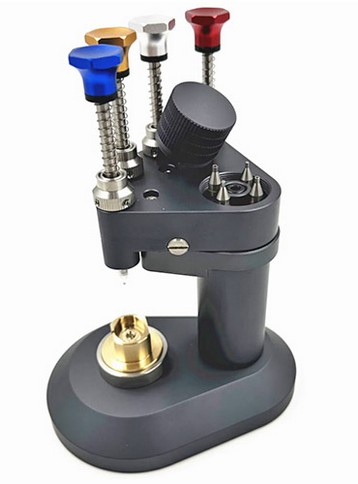 | A great help when setting the hands. The manual error of pressing the hands in at an angle is compensated for or avoided. I often inserted the hands by hand first and then pressed them in a little more with the device. |
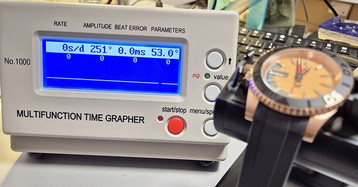 | An indispensable device for testing and readjusting the movement. The watch is placed on the microphone and the electronics measure the oscillations of the balance very precisely. This allows the rate to be checked and adjusted very precisely (for one position of the movement). |
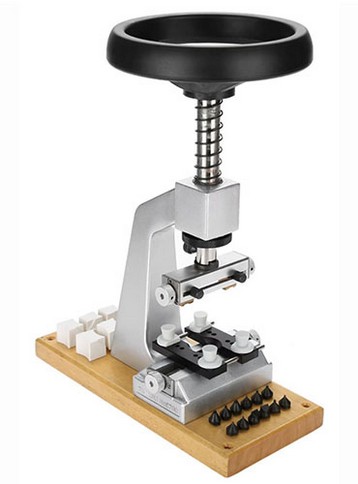 | This part can be used to open and close watch cases (with screwed covers) correctly and securely (without the risk of scratching). The device is equipped with many different inserts for different closure systems and sizes. |
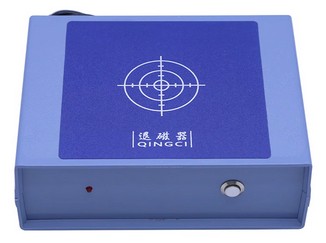 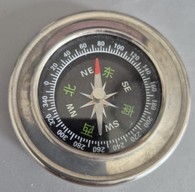 | Watch degausser helps if the watch has ever come into contact with a magnetic field. This can be measured with a simple compass, then demagnetization helps again. The device is also an effective aid for tools that have become magnetized. A very simple watchmaker's compass is used for checking. |
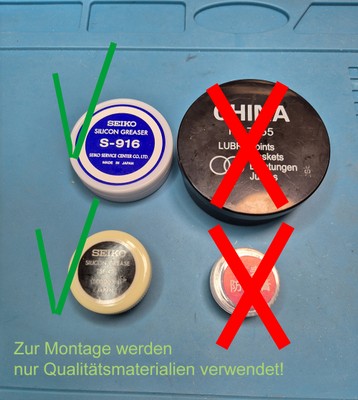 | For your information - I only use the best possible materials to assemble the watches. |
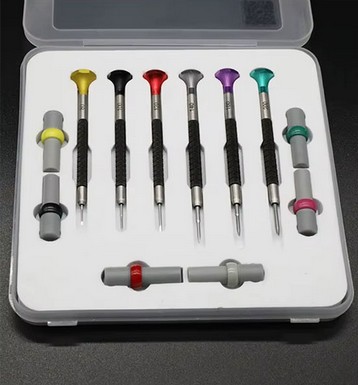 | Last but not least, an important tool - good watchmaker's screwdrivers. The ball-bearing ones from Kweng-Yuen are not cheap, but they are almost as good as those from Bergeon! |












